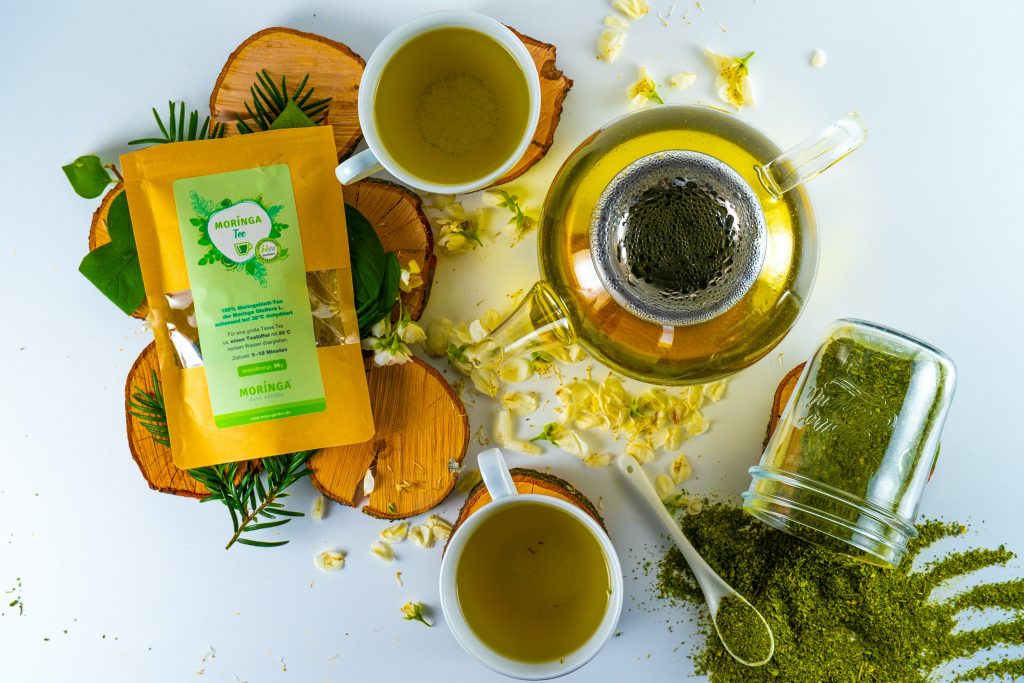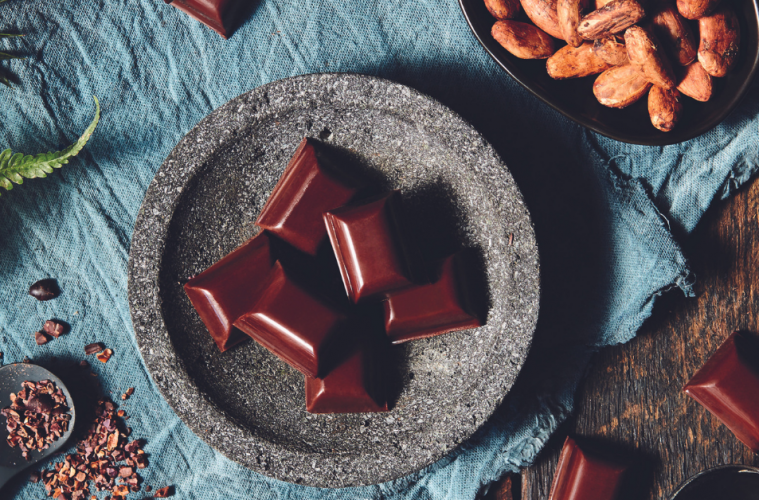From the mighty baobab to the tropical cacao, these trees have had a marked impact on not only our diets but also the way we live. It’s no surprise they’re often called ‘miracle trees’.
Cacao
Theobroma cacao
Cacao’s botanical name, Theobroma, is from the Greek for ‘food of the gods’ – appropriate for this superfood powerhouse. Thought to have been first domesticated in the Amazon basin in what is now Ecuador about 5 300 years ago, cacao was embraced by the Mayans and Aztecs further north. The beans were fermented, roasted and ground into a paste, then mixed with vanilla, honey, chilli and spices to create a stimulating brew that was both a mood enhancer and an aphrodisiac – no wonder it was worshipped as a gift from the gods and reserved for elite rulers, warriors and priests.
When the Spanish conquistadors arrived in the 1500s searching for silver and gold, they returned to Spain with valuable cacao instead. The chocolate drink (with sugar now added) became wildly popular among the Spanish elite, who managed to keep it a secret for nearly a century. But something so delectable couldn’t stay under wraps forever, and it spread to royalty and the social elite across Europe.
The advent of steam-powered machines in the mid-1700s finally diminished its exclusivity as an elixir reserved for the aristocracy. In 1850, the discovery of mixing cacao butter and powder to create a solid mass was the genesis of chocolate as we know it today.
Giving cacao its characteristic bitter flavour is theobromine, a stimulating alkaloid that increases blood flow (good for heart health) and gives an energy boost longer-lasting than a caffeine rush. It contains an astonishing number – more than 300 – of beneficial compounds that affect our wellbeing, health and brain chemistry. It’s a natural anti-depressant, triggering ‘happy’ neurotransmitters in our brain such as serotonin and dopamine. It contains forty times more antioxidants than blueberries, has the highest iron content of any plant, is one of the highest plant-based sources of magnesium and contains more calcium than cow’s milk. Plus it contains the very beneficial amino acid arginine.
Most commercial chocolate and cocoa powder go through processing, in which the raw cacao is roasted and treated with chemicals to remove the bitter taste, but this destroys up to 90% of the beneficial compounds. So eating a bar of sugary, processed chocolate isn’t going to provide much of cacao’s benefits.
Healthy, unprocessed cacao is available as nibs or powder. The nibs (coarsely chopped cacao beans) are crunchy, slightly fruity and bitter (even the darkest dark chocolate has some sugar to balance the bitterness). Lightly toasting the nibs reduces this (heat decreases some of the benefits but increases others). The nibs can be eaten as they are, blended in smoothies or added to baking, granola and trail mixes. They’re also good in savoury and spicy sauces. They can be a bit crunchy and hard, especially in a sauce, so blend beforehand or use powdered cacao.
Don’t overdo your intake of raw cacao as too much theobromine can lead to nausea and the shivers. It also has quite high levels of oxalic acid, so if you’re prone to kidney stones, limit your intake. And please do keep all raw cacao products away from dogs, as theobromine is deadly poisonous for them.
Vitamins A, B (1, 2, 3 and 5), C and E; calcium, copper, iron, magnesium, manganese, potassium and zinc.
Moringa
Moringa sp.

Native to India, this fast-growing, deciduous tree has been used in Ayurvedic medicine for more than 5 000 years. It’s an incredibly nutrient-dense plant, containing over 500 beneficial compounds. The pods are eaten as food and the bark and roots have medicinal value, but it’s the leaves that are most nutritious, containing a range of vitamins and minerals, fibre, complete protein, lysine, tannins, kaempferol, quercetin and more. They’re good as a general tonic, an energy and immune-system booster, an anti-inflammatory and to support healthy digestion.
Moringa grows easily from seeds or cuttings. Drought resistant, it’s quick growing, even in poor soil, as long as it’s well drained. Frost-tender, it thrives in tropical and subtropical climates and grows more slowly in colder areas, where it tolerates very mild frosts if protected. In the wild, moringas reach up to 12 m high, with an umbrella-shaped crown. When grown in an orchard, prune back to enable easier harvesting.
Moringa-leaf powder, which has an earthy bitterness, can be added to smoothies, soups and nut butters, steeped as a tea or used in baking. The fresh leaves, cooked until soft, are used as leafy greens in stews, stir-fries, soups and curries. Counterbalance their bitterness with tangy tamarind or sweet mango.
The earthy taste of freshly picked green moringa pods, diced into soups, stews and stir-fries, pairs well with bright, spicy flavours. Moringa oil is high in unsaturated fat, making it a nutritious cooking oil.
Vitamins A, C and E; calcium, copper, iron, manganese, phosphorus, potassium, selenium, sulphur and zinc.
Baobab
Adansonia sp.
Although its origin is debated, baobabs are found in Australia, Madagascar and Africa. In Burkina Faso, parents tell their children that when God planted the baobab, it refused to stay put and just kept walking, so God had to pull it up and plant it upside down to keep it in one place. This is just one of many myths the strange and magnificent baobab has generated.
Almost every bit of this tree is utilised. The fibrous bark is made into rope, fishing nets, cloth and paper, plus it’s taken medicinally to treat fever, coughs, asthma and malaria. The sap is used to make soap, rubber and glue.
The large fruit pod, resembling a fuzzy, olive-green watermelon, contains seeds and pulp full of fibre, antioxidants and minerals with multiple health benefits, including preventing many age-related problems and cleansing our system of toxins.
The seeds, rich in fibre, are pressed to extract a healthy oil containing omegas 3, 6 and 9, vitamin E, beta-carotene and other phytonutrients. Applied topically or ingested, the oil has anti-inflammatory properties and can reduce skin rashes and dryness. In Australia, the indigenous people plant the seeds as a root crop, harvesting the nutritious and succulent roots after 9 months or so. The leaves, eaten fresh or cooked, are full of high-quality protein and calcium.
Powdered baobab fruit has a refreshing citrussy flavour, ideal for drinks, shakes and smoothies or adding to ice cream, yoghurt, baked goods, sauces and soups (it’s especially good with cold soups like cucumber or beetroot).
Vitamins B1, C and E; calcium, iron, magnesium, potassium and zinc.
Excerpt from Jane Griffiths’ Jane’s Delicious Superfoods For Super Health
ALSO SEE: HERBAL REMEDY: HOW TO MAKE HERBAL TEA & IT’S BENEFITS

